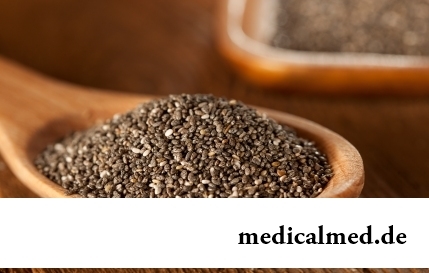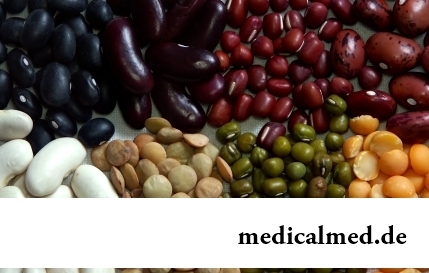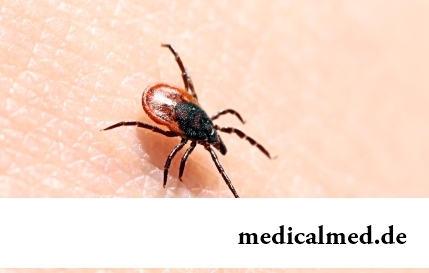





Caloric content of white loaf
Bread is among products of rather high nutritional and energy value that does it necessary in a food allowance of both children, and adults. Since Rome and Ancient Greece the recipe of preparation of bread, also as well as its role in a nutritious diet of the person, practically did not change.
Advantage and harm of white loaf
 Besides that bread contains the complex carbohydrates which are an energy source and a protein quantity, its part are: cellulose, vitamins (most of all – the folic acid and vitamins of group B participating in work of nervous cells), micro and macrocells (magnesium, zinc, calcium).
Besides that bread contains the complex carbohydrates which are an energy source and a protein quantity, its part are: cellulose, vitamins (most of all – the folic acid and vitamins of group B participating in work of nervous cells), micro and macrocells (magnesium, zinc, calcium).
Any bakery products prepared from wheat flour belong to white loaf. At the same time flour of different types and grades can be used, as defines number of calories in white loaf.
By amount of useful properties bread, certainly, belongs to useful and necessary products in a food allowance. Despite of rather high caloric content, white loaf it is recommended to eat daily thanks to a significant amount of carbohydrates and necessary vitamins.
Usually for preparation of bread use wheat flour and water. Also necessary ingredient for its preparation is culinary yeast. However the modern food industry often in preparation time of bread uses various nutritional supplements for strengthening of taste and extension of a period of storage. For this reason many doctors and nutritionists recommend to cook bread independently to exclude influence on an organism of these substances.
How many calories in white loaf
Average caloric content of white loaf makes 240-260 kcal. However the exact number of calories in white loaf depends on the recipe of production of bread as the final caloric content of a product is influenced by all ingredients entering it.
Many nutritionists are considered that bread, despite of its caloric content, should not be excluded from a diet of those who to aim to lose excess weight. However they note that in this case it is necessary to eat the bread made from mix of wheat flour with bran. In this case calories in white loaf approximately as much (245 kcal), however due to increase in amount of cellulose it is acquired quicker and more stoutly. For decrease in caloric content of white loaf at its preparation in addition to wheat flour it is possible to use rye. It will allow to reduce caloric content to 217-220 kcal on 100 g of bread.
How many calories in white loaf, depend on a type of a bakery product. At the same time the caloric content of rolls, baskets and other sweet bakery products from wheat flour is much higher, than the caloric content of white loaf. So, in 100 g contains:
- In a baguette – 282 kcal (7,9 g of proteins, 1,7 g of fats, 60,1 g of carbohydrates);
- In usual white bread – 245 kcal (5,4 g of proteins, 1,3 g of fats, 57 g of carbohydrates);
- In a roll with jam – 293 kcal (6,5 g of proteins, 4,2 g of fats, 57,1 g of carbohydrates);
- In a cheese cake with cottage cheese – 318 kcal (10,6 g of proteins, 12,3 g of fats, 40,1 g of carbohydrates);
- In a roll with poppy – 304 kcal (7,5 g of proteins, 5,2 g of fats, 55,5 g of carbohydrates);
- In a basket – 333 kcal (7 g of proteins, 7 g of fats, 61,6 g of carbohydrates);
- In jam pie – 284 kcal (5,3 g of proteins, 61 g of fats, 2,1 g of carbohydrates);
- In a sweet roll – 299 kcal (8 g of proteins, 5,3 g of fats, 53,7 g of carbohydrates);
- In a wheaten roll – 272 kcal (7,3 g of proteins, 1,5 g of fats, 58,5 g of carbohydrates).
Calories in white loaf depending on additional ingredients
To use white loaf as a part of a healthy diet, nutritionists recommend not to buy finished products, and to cook it independently. At the same time to improve taste, aroma, vitamin and mineral composition, and also to change the caloric content of white loaf, it is recommended to add to its structure seeds of various Pancake week plants, nuts, spices and spices:
- The anise – spice is from the Mediterranean families umbrella, giving to bread quite saturated sweetish and tart smack. The anise is traditionally used at baking of bread in Austria, the Southern Germany and some other European countries. The anise does not reduce the caloric content of white loaf, but promotes its best assimilation and decrease in a meteorism;
- Fennel is popular grain seasoning in many countries of Europe. It has aromas and properties, similar to an anise;
- The coriander with slightly sweetish taste is used not only for pastries, but also for baking of usual bread. Most this seasoning is popular in Germany;
- Caraway seeds are saturated with essential oils that gives to bread and rolls saturated spicy aroma. As a rule, caraway seeds are added to bakery products whole seeds in dough or strewed from above. Caraway seeds also not strongly influence the caloric content of white loaf, however it is considered one of the best spices from a meteorism;
- Pumpkin sunflower seeds can be added to bread both integral, and crushed. Thanks to linolenic acid – one of unsaturated fatty acids, necessary for an organism, pumpkin sunflower seeds considerably improve nutritional value of bread and improve its comprehensibility, though increase the caloric content of white loaf a little;
- Seeds of flax saturate bread with both nutritious, and ballast substances which promote digestion improvement, being prevention of locks. Flax is a source of vitamins, full-fledged phytalbumin, cellulose and necessary microelements. Also the bread made with flax seeds promotes decrease in level of cholesterol;
- Poppy seeds most often use at preparation of sweet products. However poppy can be added also to usual white loaf that will improve its nutritious and vitamin structure, will promote digestion improvement though can slightly increase the caloric content of white loaf;
 Seeds of sesame add as to dough, and strew from above that impacts to bread nut relish. Sesame seeds rather caloric, but at the same time they contain a large amount of calcium, magnesium and iron;
Seeds of sesame add as to dough, and strew from above that impacts to bread nut relish. Sesame seeds rather caloric, but at the same time they contain a large amount of calcium, magnesium and iron;- Sunflower seeds of sunflower are used in a large number of recipes of bread. Besides that sunflower seeds improve taste, they also do pastries crackling, enriching it with at the same time many microelements among which there is most of all magnesium;
- Walnuts most often add to bread largely crushed that gives to a product special aroma and nut smack. Also nuts are rich with unsaturated fatty acids and vitamin E. In spite of the fact that nuts increase the caloric content of white loaf, such bread is considered more useful to health is acquired better;
- Cinnamon – tropical spice with a little bitterish taste and a spicy smell which is on sale in the form of pieces of bark or in a ground look. As a rule, cinnamon is added to cookies, gingerbreads, rolls and baskets. However it can be added in small amounts and to bread for improvement of taste and aroma, and also it is considered that this spice well influences digestion and promotes weight reduction;
- The carnation contains a large amount of essential oils. Most often it is added to gingerbread dough, however thanks to strong spicy aroma and burning taste it can be used also at baking of bread for improvement of its assimilation.
According to opinion of many scientists, vitamin complexes are almost useless for the person.

The winter swimming in open reservoirs called in our country by "winter swimming" – officially recognized sport and one of the ek...
Section: Articles about health
Osteoporosis this general disease which main sign is decrease in density of a bone tissue. On distribution width it takes the fourth place among noninfectious diseases. The illness develops at mature age more often: in our country to them harvest seasons...
Section: Articles about health
A lot of things depend on a condition of a backbone in a human body, a backbone - not only a support for a body, it also a receptacle for a spinal cord, that is why malfunctions with a backbone are so dangerous. To treat rachis diseases very difficult and long, it is much simpler and more correct not to bring to a disease. Conforming to the rules provided in this article it is possible to avoid the majority of the problems connected with a backbone including those which are considered to be age, but a cat...
Section: Articles about health
Cellulitis - very widespread cosmetic shortcoming which arises approximately at 80% of women sooner or later. Emergence ег...
Section: Articles about health
Life expectancy in various regions of Earth is not identical. Social stability, economic wellbeing, availability and level of medical care, household comfort, literacy of the population in the field of observance sanitary гигиен exert impact on it...
Section: Articles about health
The kid who was recently born is surrounded with love of adult family members and their cares without which the baby cannot exist. Some parents consider that gentle attachment and caress are quite enough that the child correctly developed and was happy, but it not so. It is important to know as much as possible about specifics of care of the baby, the reasons of his behavior and possible problems. Only the "able to see" love will provide to the little man that it is necessary for him....
Section: Articles about health
According to data of World Health Organization, the cataract is diagnosed almost for 7% of the population of Earth. Statistics we get sick...
Section: Articles about health
About 10-15 years ago existence of the computer in the apartment of the Russian was considered as a rarity and office rooms were only at the first stage of equipment by these useful devices. Today practically in each house there is a computer (and often not one), and to constants...
Section: Articles about health
The way of life of people promptly changes from year to year: if about ten years ago the personal computer was not in each family, then today already very few people do without this device. Certainly, and children master the computer at full speed: they not only play on it games, but also study, and write school works, and search for necessary information....
Section: Articles about health
The chia plant, or the Spanish sage, is from South America. The indigenous people of the continent since ancient times used in food it семена:...
Section: Articles about health
Bathing in broths of medical flowers and plants (phytobathtub) was eurysynusic since Cleopatra who is a good judge in all that concerns beauty and health. And today phytobathtubs is the simple and available means allowing not only to remove nervous N...
Section: Articles about health
The state of health of the person depends on many factors. One of the most important is the constant, but not exhausting a physical activity. In the presence of various illnesses specialists often advise patients to do swimming which by right takes the leading place by efficiency of improvement, having at the same time a few contraindications. Today we will talk about the main directions of therapeutic impact of swimming on a human body....
Section: Articles about health
The modern person not always manages to find housing in the environmentally friendly region and such work which would not do harm здо...
Section: Articles about health
Ability of an organism to resist to adverse environmental factors (to impact of temperature drops, humidity and pressure, to the attacks of causative organisms, etc.) directly depends on what the person eats. Business here not only in, that C...
Section: Articles about health
The popular expression "run from a heart attack" became the motto of the people supporting active lifestyle. Moreover, run became a peculiar fashionable tendency: sales of racetracks and the accompanying goods for run are at permanently high level. Whether really it is possible for one and all people and it is necessary to run to receive the portion of health, a charge of cheerfulness and good mood?...
Section: Articles about health
Smoking not only exerts a negative impact on the state of health of the consumer of tobacco products, but is a source з...
Section: Articles about health
The brain of the person is studied not one hundred years, but the quantity of the riddles connected with this body increases rather, than decreases. Perhaps, numerous delusions concerning a structure and functioning of a brain, many are explained by it from...
Section: Articles about health
Statistically, can only one of ten of our compatriots brag of a decent condition of an oral cavity. Six teeth affected with caries are the share of the average Russian. For comparison, this indicator for Europeans is almost six times less....
Section: Articles about health
The body of the person almost for 60% consists of water. It is so important for normal functioning of an organism that loss of all is ponut...
Section: Articles about health
Quite large number of people adheres to the principles of vegetarian food. But how to be if in a family of vegetarians there are children? Whether it is possible to eat also it the same as to parents, or after all the children's organism is not adapted for the use only раст...
Section: Articles about health
Each person has easy indispositions which he transfers "standing", trying not to ask for medical care. Arguments at the same time are adduced same: "it is a trifle, itself will pass", "I have too many important issues", "there are no wish to spend time for doctors", etc. At good shape of health, normal working capacity and lack of suspiciousness dislike for complaints to such problems is quite natural. It is not the most correct, but very widespread type of behavior. I am glad...
Section: Articles about health
For anybody not a secret that our country is one of the most "drinking" in the world. At clear understanding of that the use of strong...
Section: Articles about health
Sooner or later hair turn gray at all. Many people try to hide these changes, returning natural color of the hair by means of coloring, or considerably changing it for the purpose of creation of absolutely new image. All know that the gray hair is a sign приближающ...
Section: Articles about health
Women quite often suffer from complexes concerning the sizes of the bust. Strangely enough, not too modest, and excessively curvy shapes become the reason of sincere discomfort sometimes. Except psychological problems, the big bust sometimes creates also quite notable malfunctions with health: his owner can feel muscular dorsodynias, feeling of constant fatigue and difficulty of breath. Over time excess loading leads to development of diseases позвоночн...
Section: Articles about health
Tick-borne encephalitis – one of the most dangerous viral diseases which causative agents transfer and is given to people by ixodic mites. Эт...
Section: Articles about health
Water with a lemon - idle time in preparation drink which supporters of a healthy lifestyle already managed to appreciate. Used in a warm look and on an empty stomach, it is one of the most useful prophylactics allowing to prevent tens з...
Section: Articles about health
We present to yours the TOP of the medicamentous means exerting the stimulating impact on a potentiality, i.e. on ability of the man to commission of sexual intercourse. At once it is necessary to tell that not always disturbances of erectile function can be eliminated with reception of this or that drug. The reasons of decrease in a potentiality there can be a set, from banal overfatigue before tumoral process in a small basin therefore if the man faces similar problems too often, it should turn...
Section: Articles about health
